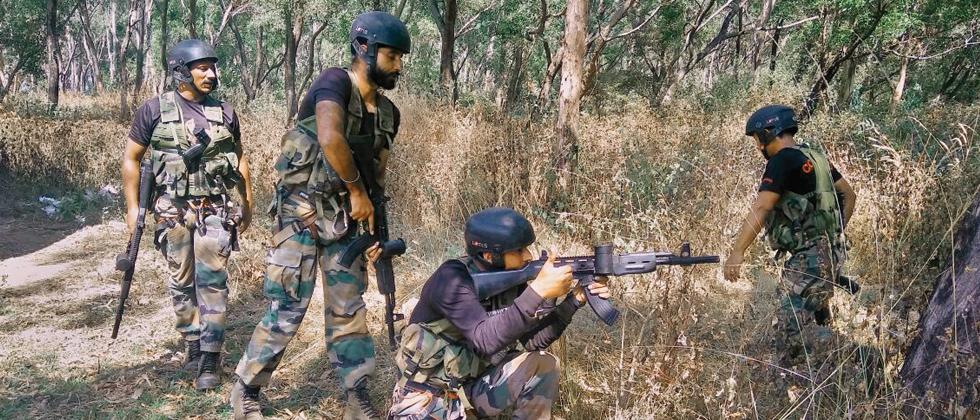
New Delhi. A week long exercise by the newly-raised special operations division of the armed forces — comprising commandos from the special forces of the Army, Marine Commando unit of the Navy and Garud of the Air Force — concluded on September 28 in Gujarat.
The exercise was to test the drills and capabilities of the brand new division and pinpoint the challenges faced by it, so that they can be worked on, sources said.
The force set up in May this year, the tri services Armed Forces Special Operations Division was aimed at sharpening the military’s operational capabilities in conventional war and anti-terror operations.
The division is meant for lethal surgical strikes and cross border operations.
While the division had been recommended by the Naresh Chandra Committee on Defence management in 2012, it was only announced by Prime Minister Narendra Modi during the Combined Commanders’ Conference in September 2018.
The committee had recommended setting up three commands — Special Operations, Cyber and Space — to further strengthen India’s national security by addressing emerging challenges.
The concept of this division is also influenced from the US, which has the Joint Special Operations Command (JSOC).
The new division will be capable of carrying out crippling attacks against enemy targets miles away, even inside enemy territory. It will have about 2,000 commandos drawn from the Special Forces of the Army, Marine Commando unit (MARCOS) of the Navy and Garud of the Air Force.
An accomplished special forces operative and Sri Lanka war veteran Major General A.K. Dhingra heads the tri-services division. He is from the elite 1 Para Special Forces Regiment.
Sources said Lt Gen PJS Pannu, deputy chief of Integrated Defence Staff (Operations) played a major role in shaping the division. He retires on October one, this year.
The division will be under the Integrated Defence Staff (IDS), responsible for synergising the functioning of the three forces and headed by a Lt General-rank officer. It is expected to be the first choice of the government for undertaking any major counter-terrorism operation both within and outside the country.
While the Army has a strength of around 6,000 special forces personnel, both Navy and the IAF have around 1,000 each.
Special forces specialise in close-quarter combat situations to control well-defended positions of the enemy and can carry out any task anywhere behind enemy lines.
A senior officer from the military explained that naval commandos, for instance, go to enemy coasts to destroy shore defences so that a bigger force can come in.
The new division would be directly responsible for covert missions in support of the main thrust, specialised operations in explosives, or debilitating attacks.
The creation of the division was hailed as the first step towards the integration of the three services, with the special commandos of the three services being brought together under a common command and control structure.
The division was to initially have 150-200 personnel but the numbers will be increased to have a 2,000-strong commando tri-service division. The numbers from the Army will be more than the other two services, according to reports.
“With highly trained commandos from all three divisions who would work closely with each other, the division will be the first choice of the government for highly sensitive critical operations, including those targeting terror infrastructure across borders in a short span of time,” sources said.









